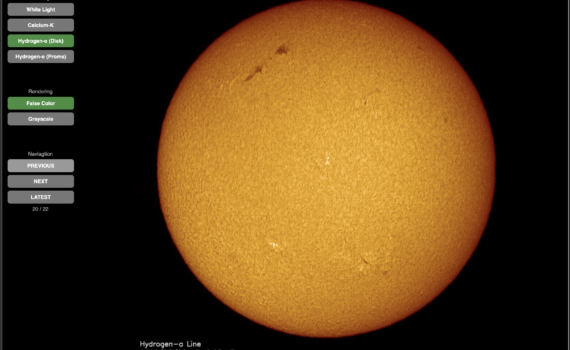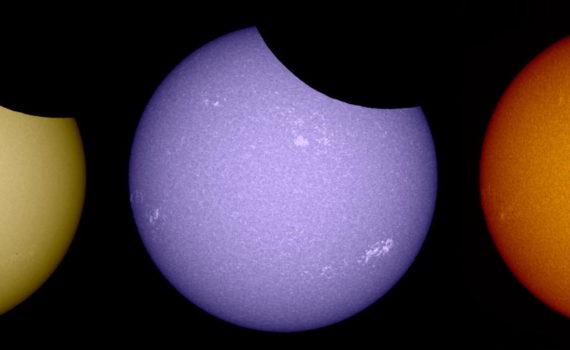During the summer months, the TURM Observatory is set up for remote solar observations. Three of the telescopes record images of the complete solar disk in different regimes of the visible spectrum: Continuum, Calcium-K, and Hydrogen-α. The raw data consists of sequences of several hundred monochrome images with very short exposure times. Many of these images are washed out due to atmospheric turbulence, the so-called seeing. We select only the best ones afterwards – a technique called ‘lucky imaging’.
Whenever the TURM telescopes take new data, a post-processing pipeline is triggered automatically and creates an image from the raw data. The post-processing includes the selection of the sharpest image from the raw image sequence, contrast enhancements and deconvolutions, as well as an artificial colorization. The most recent auto-processed images are shown below…
WARNING: We use specialized equipment to observe the sun. Never point your camera or telescope at the sun without special protective filters. Never look directly at the sun with the unaided eye. Permanent damage is guaranteed!
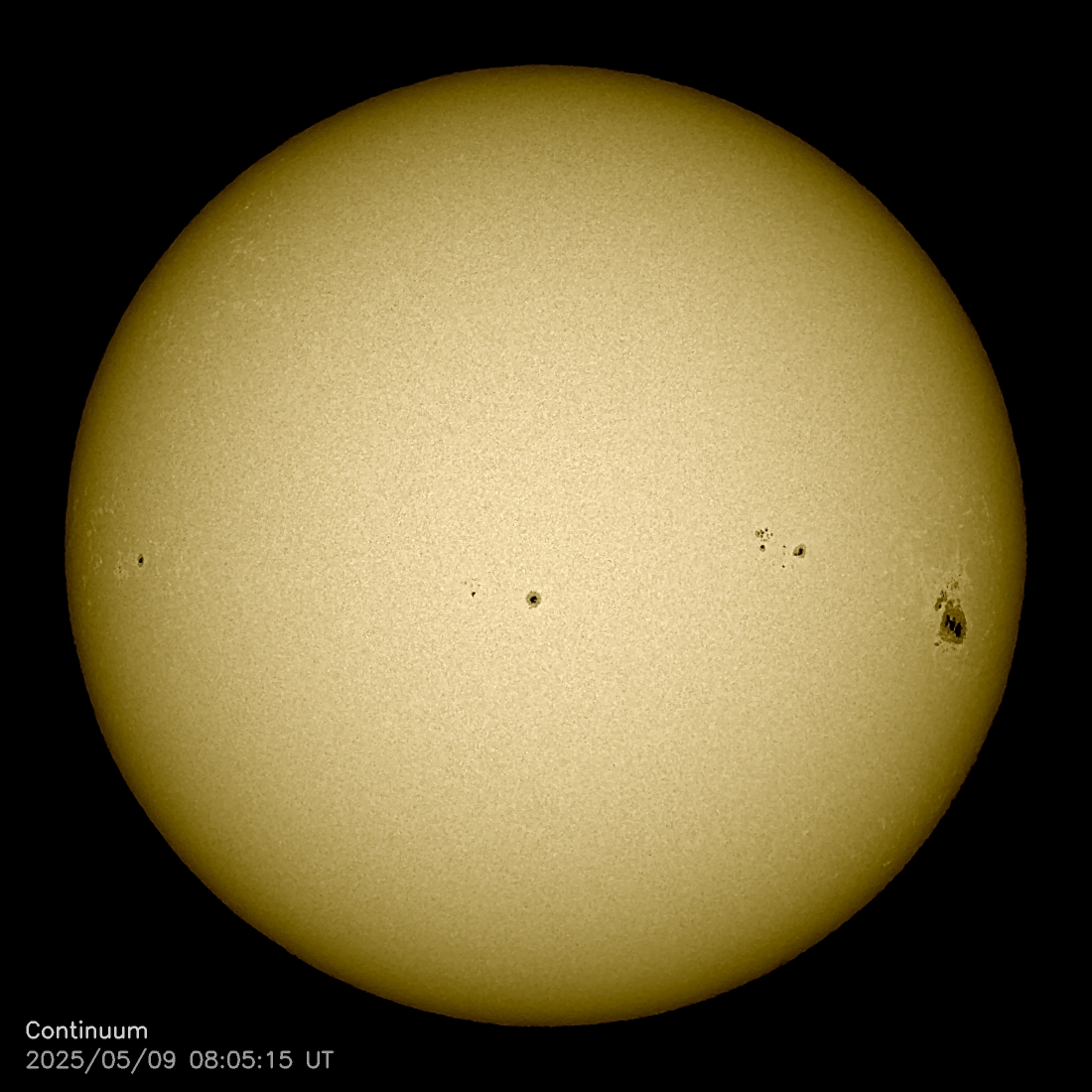
Continuum
This is an image of the apparent surface of the sun – the photosphere, where most of the photons that escape the sun originate form. We use light from the green part of the visible spectrum, around wavelength of 540nm. In this window we see mainly the continuum emission of the photosphere, which resembles a nice black-body radiator.
The main features visible in these images are sunspots and granulation. Since we are on the way towards the next solar maximum, things are getting more interesting…
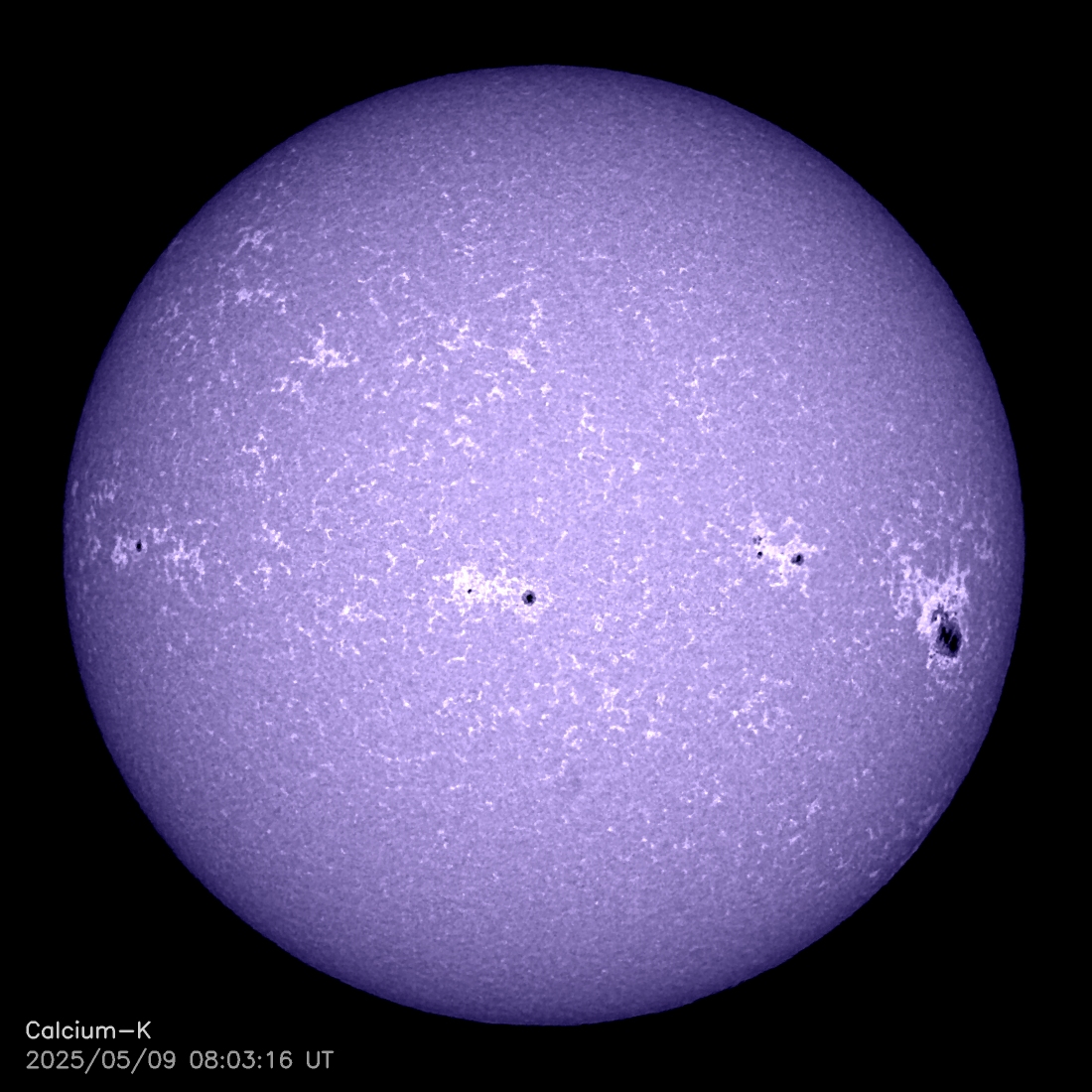
Calcium-K
Isolating wavelengths that correspond to specific atomic transitions provides a much more detailed view of the solar atmosphere. A transition in singly-ionized Calcium atoms at 393.4 nm, the Calcium-[II]-K line, provides a view into chromosphere, the layer above the photosphere.
The main features visible here are connected to the magnetic field activity in the chromosphere. Bright regions generally correspond to strong magnetic fields. This includes the chromospheric network and bright areas around sunspots.
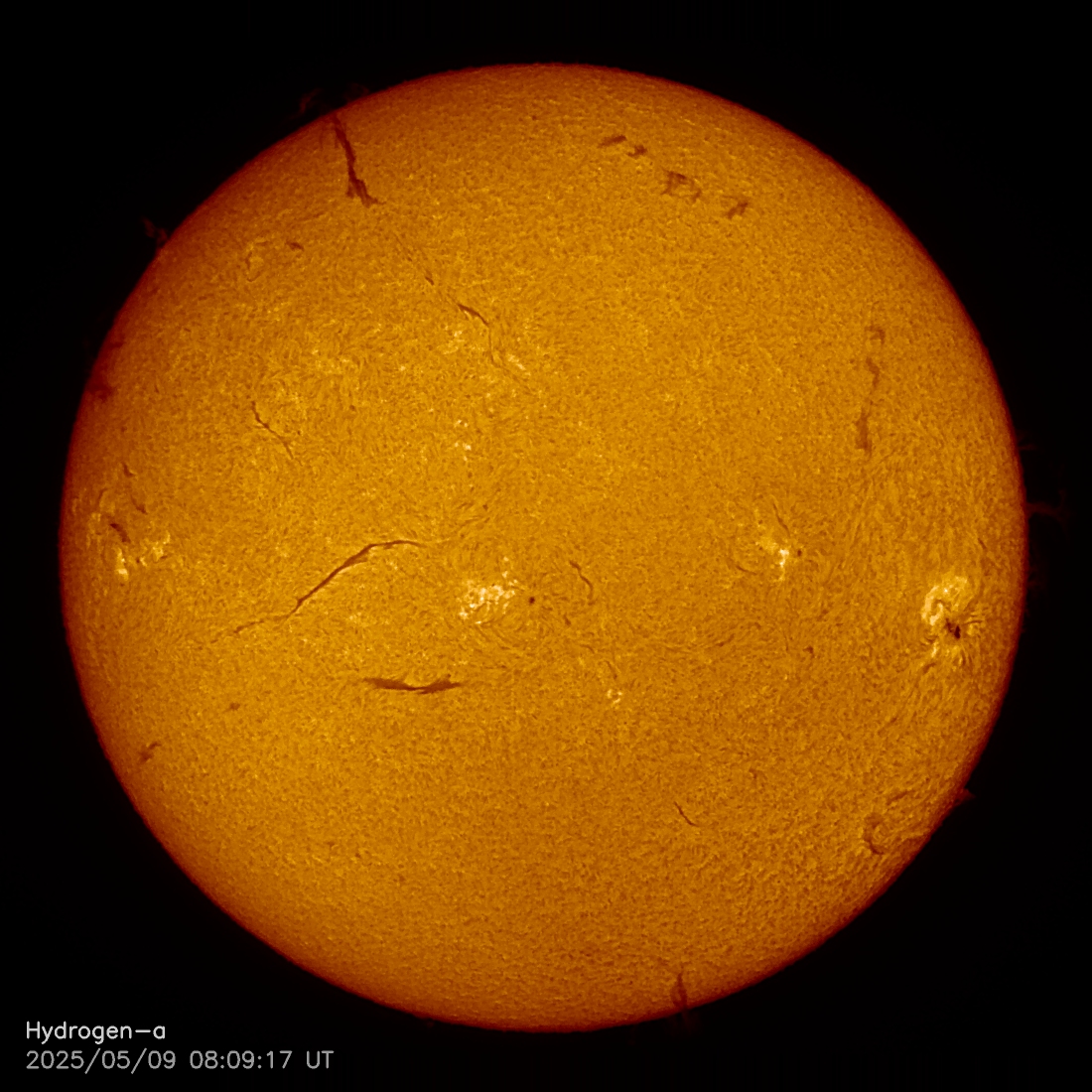
Hydrogen-α
The most ubiquous element in the universe is Hydrogen and the most important atomic transition in the visible regime is the Balmer-α aka. Hydrogen-α line at 656.28nm. Viewing the sun at this wavelength highlights the dynamics of the chromosphere.
The exposure time in this image is adjusted to view Hydrogen-α features on the solar disk. This includes dark filaments, bright flares, and spicules.
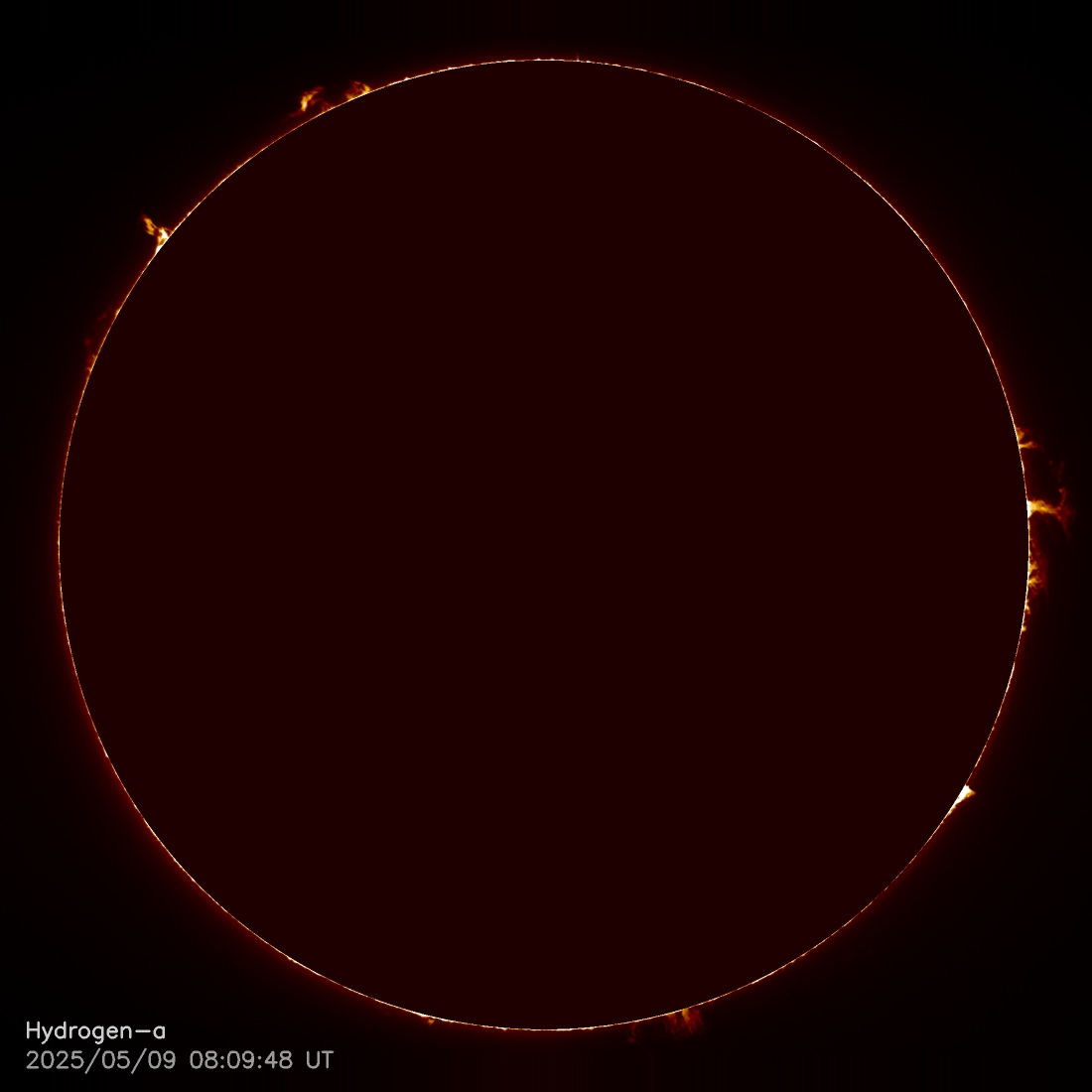
Hydrogen-α
Staying on the Hydrogen-α line but increasing the exposure time allows us to detect the emission of light from hot Hydrogen gas that is ejected from the sun. This is possible only beyond the edge of the sun against the backdrop of empty space. The overexposed solar disk is covered during the image processing.
The features that appear around the solar limb are prominences, coronal loops, spikules, surges,… you name it.
For more information visit one of the following pages. To explore all the solar observations from the TURM Observatory, head over to the Solar Image Browser.
The solar image browser provides easy access to all auto-processed images taken at the TURM Observatory. […]
The instrumentation at the TURM Observatory is optimized for the observation of the sun, i.e., the apparent surface of the sun – the photosphere – and the atmospheric layers above – the chromosphere. In contrast to many faint and fuzzy night-time objects, the sun offers a huge intensity across the […]
The dome on top of the Uhrturm houses a versatile setup with several telescopes riding on the same mount, an 10micron GM 2000 HPSII equatorial mount. This mount accurately compensates the earth rotation with high accuracy and allows us to point the specific objects in the sky with high precision. […]

